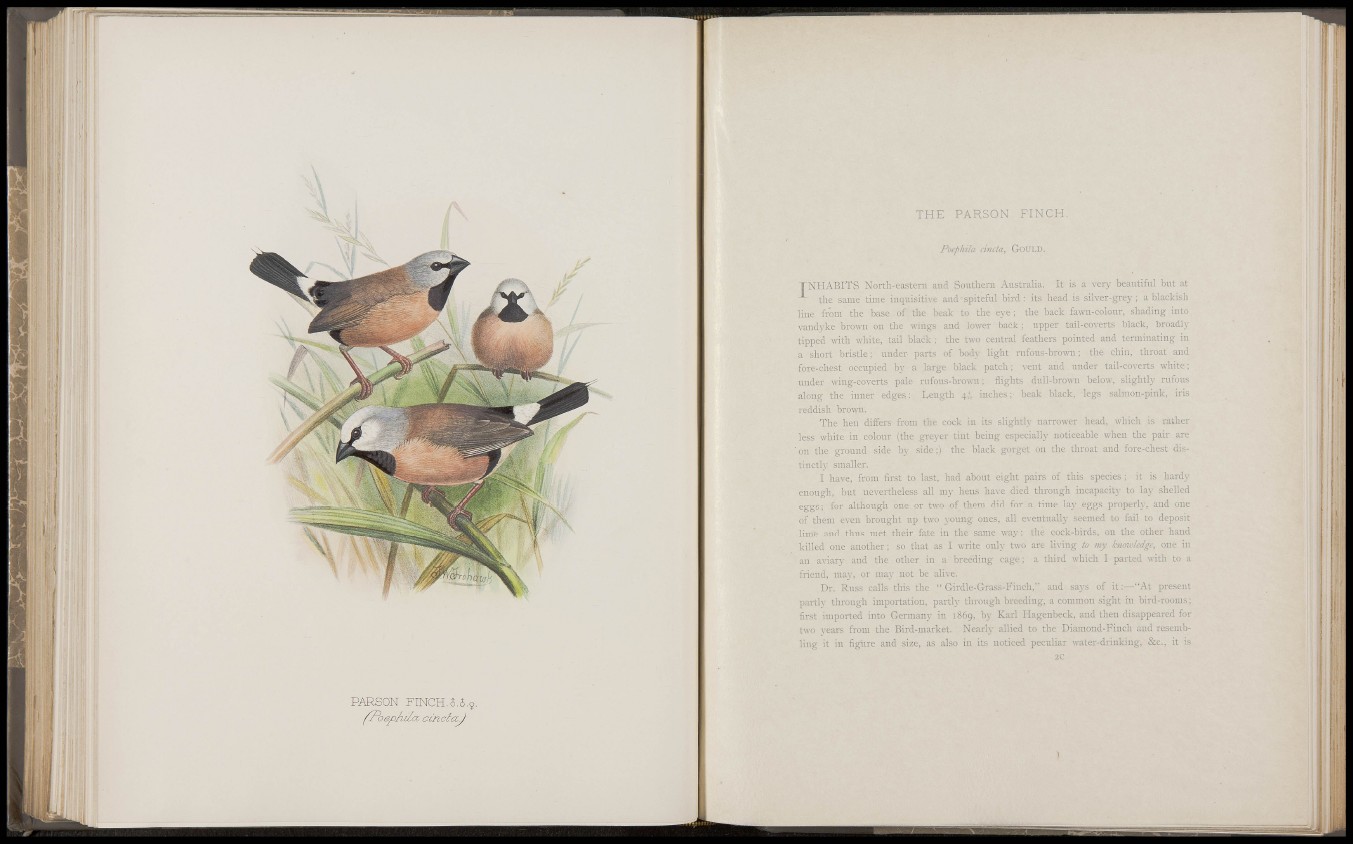
Ii 1 !
• I 'f
•ll'.1l
•• I .i
— il l ' '
^ ijjM'
lit
M i
r I'
; I'
t ii
^
:<i*«i
iii!!:
1 :i
i'il::, r
I : Im
i s ^
PARSON FINCH.5.5.$.
^/iepALla cinciizj
THE PARSON FINCH.
Poephila cincta, GoULD.
rNHABITS North-eastem and SoiUheni Australia. It is a very beautiful but at
the same time inquisitive and'spiteful bird: its head is silver-grey; a blackish
Hue from the base of the beak to the eye; the back fawu-colour, shading into
Vandyke brown on the wings and lower back ; upper tail-coverts black, broadly
tipped with white, tail black ; the two central feathers pointed and terminating in
a short bristle; under parts of bod> light rufous-brown; the chin, throat and
fore-chest occupied by a large black patch; vent and under tail-coverts white;
under wing-coverts pale rufous-brown; flights dull-browu below, slightly rufous
along the inner edges: Length 4,;, inches; beak black, legs salmon-pink, iris
reddish brown.
The hen differs from the cock in its slightly narrower head, which is rather
less white in colour (the greyer tint being especially noticeable when the pair are
' on the ground side b}- side ;) the black gorget on the throat and fore-chest distinctly
smaller.
I have, from first to hist, had about eight pairs of this species ; it is hardy
enough, but nevertheless all m}- hens have died through incapacity to lay shelled
eggs; for although one or two of them did for a time lay eggs properly, and one
of them even brought up two young ones, all eventually seemed to fail to deposit
lime and thus met their fate in the same way: the cock-birds, on the other hand
killed one another; so that as I write ouh- two are living to my knowledge, one in
an aviary and the other in a breeding cage; a third which I parted with to a
friend, may, or may not be alive.
Dr. Russ calls this the " Girdle-Grass-Finch," and says of it:—"At present
partly through importation, partly through breeding, a common sight in bird-rooms;
first imported into Germany in 1869, by Karl Hagenbeck, and then disappeared for
two years from the Bird-market. Nearly allied to the Diamond-Finch and resembling
it in figure and size, as also in its noticed peculiar water-drinking, &c., it is
2C